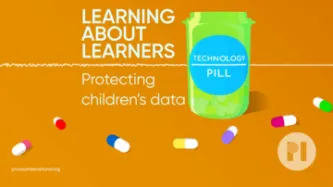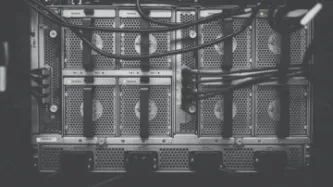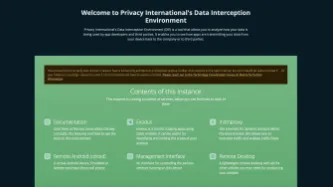Advanced Search
Content Type: Examples
Leading AI company OpenAI is to provide generative AI capabilities in addressing security challenges in both frontline warfighting efforts and office business functions for the US Department of Defense. The project is estimated to run until July 2026. It marks the first collaboration for OpenAI under their initiative to incorporate AI for governments.https://www.theguardian.com/technology/2025/jun/17/openai-military-contract-warfightingPublication: The Guardian (Via Agence France-Presse)
Content Type: Examples
MBDA’s start-up NEODE Systems has secured its first major contract from France’s defense procurement agency (Direction Générale de l’Armement) to enhance the Akeron MP missile system with AI-driven capabilities. The project will test a decision-support tool designed to boost surveillance, targeting, identification and engagement performance for beyond-line-of-sight missions.https://www.army-technology.com/news/neode-akeron-mp-contract/Publication: Army Technology
Content Type: Examples
The NATO Support and Procurement Agency (NSPA) has ordered Carl-Gustaf M4 weapon systems and munitions from Swedish defense firm Saab on behalf of the Netherlands and France to support ground combat modernization. The contract includes advanced ammunition types and will begin delivery in 2025. This order builds on a €176 million framework agreement since 2022 and highlights ongoing collaboration between Saab, NSPA, and NATO member states.https://defence-industry.eu/nspa-orders-carl-gustaf-m4-…
Content Type: Examples
NATO Allied Command Operations (ACO) has contracted ICEYE within the frame of the Alliance Persistent Surveillance from Space. The initiative is coordinated by NATO and is intended to improve the space-based sharing of intelligence across NATO member states. ICEYE’s SAR satellites, capable of high-resolution imaging in all weather and lighting conditions, will support faster decision-making in political and military fields. This builds on ICEYE’s earlier agreement in March 2025 to supply data…
Content Type: Video
Links:Read more from Defend Digital MePI's work on Securitising Education25 Years old - The Database State report5 safes principlesUK Government's publication on Genomics in EducationTips and Tricks for submitting a Data Subject Access RequestRequest your information from the Department for Education
Content Type: Long Read
We continue producing real change by challenging governments and corporations that use data and technology to exploit us.Though 2025 has been a tumultuous year, we’ve achieved some wins and we would like to share them with you.Creating real change is hard, and worthwhile changes takes time. We uncover problems, draw attention to them, and pressure for improvement. In the third quarter of the year, we helped ensure Clearview AI’s business falls under the GDPR; challenged facial recognition…
Content Type: Advocacy
The meeting brought together representatives from UN bodies, civil society, academia, and election oversight institutions. Participants agreed that while digital technologies can improve electoral access and administration, they also pose serious threats to human rights, including privacy, freedom of expression, participation in public affairs, and equality, as well as democratic accountability if left unregulated. Discussions focused on three core areas: the role of national authorities, the…
Content Type: Advocacy
The International Labour Organisation (ILO) is developing standards for decent work in the platform economy. Gig workers are exposed to a range of harms because of the precarious nature of their work and the use of opaque algorithms to manage them.Privacy International has come together with Human Rights Watch, TEDIC, IT for Change, Derechos Digitales and more than 30 other organisations to demand that this new ILO standard puts a stop to harmful practice, protects and promotes workers' rights…
Content Type: Long Read
Period tracking apps and the rollback of reproductive rightsThe aftermath of the overturning of Roe v. Wade in the United States (US) sparked widespread debate and concern that data from period tracking apps could be use to criminalise those seeking abortion care.While the surveillance and criminalisation of reproductive choices are neither new nor unique to the US, the scale and intensity of today’s crisis continue to grow. To put it into perspective, 22 million women and girls of reproductive…
Content Type: News & Analysis
Layla looks at her calendar on her phone. She’s in charge of planning her book club’s monthly meeting. After thinking for a second, she summons her AI assistant: “Hey Assistant, can you book me a table at that tapas restaurant I read about last week, and invite everyone from the book club? The restaurant should be in my browsing history. Let me know if the journey is more than 1-hour for anyone”. As the assistant compiles a response, she wonders if anyone else will hear this.Technology has made…
Content Type: Explainer
The Free to Protest Guide (Türkiye) has been created by adapting Privacy International's (PI) Free to Protest Guide UK according to the laws and policies of Türkiye, in collaboration with PI and local activists in Türkiye.The Guide has been published in English and Türkçe.DISCLAIMER: This guide forms part of PI's global work to highlight the range of surveillance tools that law enforcement can use in the protest context, and how data protection laws can help guarantee individuals' data privacy…
Content Type: Advocacy
The Open informal consultations on lethal autonomous weapons systems, held in accordance with General Assembly resolution 79/62 at the UN in New York on 12-13 May 2025, examined various legal, humanitarian, security, technological, and ethical aspects of these weapons. These consultations aimed to broaden the scope of AWS discussions beyond those held by the Group of Governmental Experts (GGE) at the UN in Geneva. Find out more about what happened during the discussions at Researching Critical…
Content Type: Examples
Universities across the US are setting up task forces, tightening disciplinary policies, employing surveillance cameras, and hiring private investigators to track anti-Israel student protesters in response to criticisms that they have allowed antisemitism to spread alongside pro-Palestinian demonstrations. In early February 2025, US president Donald Trump signed an executive order directing the State and Education Departments to push colleges to report non-citizen students or staff who engage…
Content Type: Examples
In January 2025 as Robert Fico's coalition government fell apart, he began claiming, based on a single ChatGPT-generated email, that peaceful mass anti-government protests could escalate into violent clashes between citizens and security forces, and trigger a coup d'état. The government began wiretapping organisers of anti-government protesters, journalists, and opponents, as well as tracing financial transactions and photos. The opposition party filed a criminal complaint alleging the…
Content Type: Examples
Human Rights Watch has called for an investigation into Georgian security forces' "brutal police violence" against peaceful protesters during two weeks of demonstrations against the government following elections in October that the OSCE has said were marred by vote-buying, double voting, physical violence, and intimidation. The authorities have since arrested hundreds of people and surveilled participants with Chinese-made facial recognition cameras. https://www.rferl.org/a/hrw-…
Content Type: Examples
UCLA has come under criticism for "militarising" its campus and the amount of money it's spending on security since pro-Palestinian protests began in 2023. The university's new Office of Campus Safety is led by former Sacramento police chief Rick Braziel, who says he wants to create a "beautiful campus where people feel safe and comfortable with each other". Others, however, feel that stepped-up patrols are making the campus climate tense.https://www.latimes.com/california/story/2024-10-11/…
Content Type: Examples
The Vancouver police board has asked retired officers to investigate police surveillance of pro-Palestinian demonstrations following complaints from protesters and legal advocates about the excessive use of force and invasions of privacy during a protest on May 31, 2024. Protesters have accused the police of attempting to criminalise and repress people's right to freedom of expression; conducting surveillance via drones, personal mobile phones, and body-worn cameras; and using extreme force.…
Content Type: Examples
In preparation for the anniversary of the October 7 attacks, Vancouver police planned to post "significant and visible" extra officers throughout the city. In the year since, the Vancouver police department had attended 344 protests relating to the Israel-Hamas war at a cost of C$4.1 million and including 3,318 overtime shifts. Police also planned to increase their presence around mosques, synagogues, SkyTrain stations, and community centres, including a public safety trailer and mobile command…
Content Type: Examples
Anti-Israel groups planned protests in New York City for the anniversary of the October 7, 2023 Hamas attack. Law enforcement said police planned to be out in full force and to beef up security at synagogues and mosques for Rosh Hashanah, taking place the same week. Expectations were that the anniversary would exacerbate already-inflamed tensions on university campuses. In addition, additional cameras were planned in addition to the 80,000 cameras already in the city's NYPD Domain…
Content Type: Video
It's our first time attempting a video podcast, so please let us know what you think by dropping us an email at [email protected]! Read more about our challenge against the UK's secret TCN powers.
Content Type: Long Read
If you’ve ever used TikTok, Instagram, or X/Twitter, you will already be familiar with centralised social media.Centralised social media means big company owns the app, controls the software, and keeps all your data.For example, ByteDance makes TikTok. They own it, run the servers, decide what you see in your feed, and hold onto every video you like or comment on. They call the shots when it comes to your data.But what if social media didn’t work that way? What if no single company was in…
Content Type: People
Vera has 25 years of experience at the intersection of digital technology, social justice and philanthropy. She is an independent philanthropic advisor and Honorary Senior Research Fellow at UCL Faculty of Laws. For two decades, she has served in programmatic leadership roles for the Open Society Foundations (OSF), the world’s largest private funder of human rights, where she directed the Global Program on Technology & Society. Prior to her work in philanthropy, she has held academic…
Content Type: People
Sara Fratti is a Guatemalan lawyer specializing in technology and human rights, with 10+ years of experience in Internet governance, digital rights, international law, intellectual property, and AI policies. She focuses on data protection, gender-based violence facilitated by technology, and surveillance from a human rights perspective. She is the Strategic Partnerships manager at ILDA (Iniciativa Latinoamericana por los Datos Abiertos), fostering collaboration on data and AI governance.…
Content Type: People
Martin Scheinin is Guest Professor of international human rights law at Lund University (Sweden) and part-time professor at the European University Institute (Italy). He has served as member of the UN Human Rights Committee, UN Special Rapporteur on human rights and counterterrorism and member of the Scientific Committee of the EU Fundamental Rights Agency. As academic scholar, he has run several multi-annual research projects related to the right to privacy, including the EU-funded project…
Content Type: Long Read
Go back to the report page Methodology We looked at the top period tracking apps downloaded in the Google Play Store, some of which we had examined in our original research, and some of which are newly emerging apps that have since grown in popularity. The top period-tracking apps with the most downloads included Flo; Period Tracker by Simple Design; and apps we'd tested in our previous research that still exist such as Maya, Period Tracker by GP Apps, as well as several apps popular…
Content Type: Long Read
Go back to the full report page Flo, headquartered in London, UK, is one of the most popular period-tracking apps on the market with over 380 million downloads. The app was previously accused of sharing data with Facebook, such as informing Facebook whenever a Flo user was on their period or if they intended to get pregnant. In 2021, the U.S. Federal Trade Commission (FTC) reached a settlement with Flo to undergo an audit of their privacy policy and to obtain user permissions before…
Content Type: Long Read
Go back to the full report pagePeriod Tracker by Simple Design is another popular period tracking app that has over 150 million users. To begin using this app the user answers a set of three onboarding questions for about their cycle pattern. The user has the option to answer 'I'm not sure' for each question. After answering 'I'm not sure' for these three questions, we were able to proceed on the app without having to create an account. Throughout our experience inputting our cycle…
Content Type: Long Read
Go back to the full report pageThe Maya app is a period tracker app by Plackal Tech based in India. In our previous investigation, we revealed Maya was sharing a plethora of user input data to Facebook. However, in response to our 2019 research, the app claimed it had since ‘removed both the Facebook core SDK and Analytics SDK from Maya’ while ‘continu[ing] to use the Facebook Ad SDK, post opt-in to our terms and conditions and privacy policy’ for revenue purposes, the latter of which 'does not…














